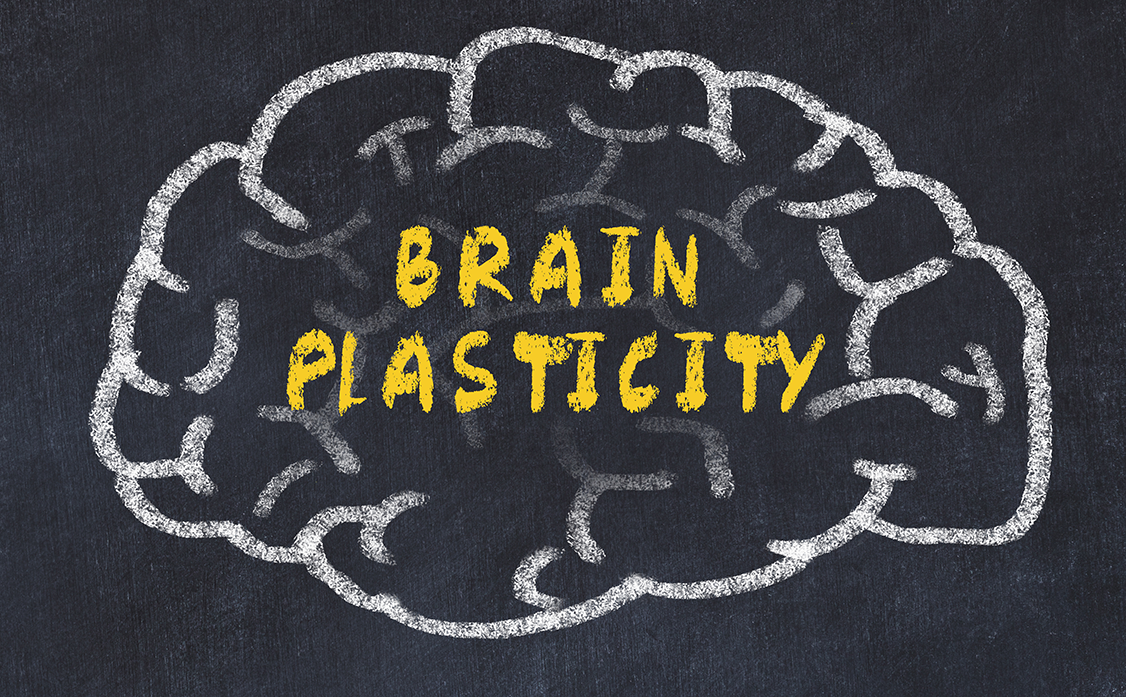The Science of Neuroplasticity
How to Train Your Brain for Better Health
What if I told you that you could literally change your mind? The idea might sound like something out of a science fiction novel, but it’s grounded in the fascinating concept of neuroplasticity. Our brains aren’t fixed entities—they have the remarkable ability to rewire and adapt throughout our lives.
At LWell, we embrace the transformative power of neuroplasticity to enhance the health and well-being of our clients. Our health coaches and dietitian nutritionists are dedicated to providing holistic health services that leverage the principles of neuroplasticity to promote optimal brain health.
Neuroplasticity refers to the brain’s ability to reorganize itself by forming new neural connections throughout life in response to learning, experience, and environmental factors. This fascinating phenomenon underscores the dynamic nature of our brains and holds profound implications for our health and well-being.
This blog post will explore neuroplasticity and its significance for brain health and provide actionable techniques for effectively retraining your brain.
Understanding Neuroplasticity
Neuroplasticity refers to the brain’s ability to reorganize itself by forming new neural connections throughout life. Neuroplasticity reflects the brain’s inherent malleability, enabling it to continually remodel its structure and function to optimize performance and efficiency.
Key factors that influence neuroplasticity include genetics, environmental influences, behavior, and neural activity. Genetics plays a role in determining an individual’s baseline level of neuroplasticity, while environmental factors such as diet, exercise, stress, and social interactions can promote or inhibit neuroplastic changes. Additionally, certain behaviors (which we’ll cover below) can stimulate neuroplasticity, facilitating the formation of new neural connections and enhancing brain function.
By gaining a deep understanding of the principles of neuroplasticity and the factors that influence it, you are not just learning about your brain but gaining the power to shape it. This knowledge empowers you to leverage neuroplasticity to your advantage, fostering positive changes in your brain health and overall well-being.
Benefits of Neuroplasticity for Health
The concept of neuroplasticity not only revolutionizes our understanding of the brain but also opens up a world of possibilities for enhancing our health across various domains. From cognitive to emotional and physical health, neuroplasticity has a profound impact. Here are some of the critical benefits of neuroplasticity:
Cognitive Benefits:
- Improved memory and learning: Neuroplasticity allows the brain to create new neural connections, facilitating the encoding and retrieval of information and enhancing memory and learning abilities.
- Enhanced problem-solving skills: Neuroplasticity can improve problem-solving abilities by rewiring neural circuits, enabling individuals to approach challenges with greater flexibility and creativity.
- Increased creativity: Neuroplasticity fosters the development of novel neural pathways, promoting divergent thinking and creative problem-solving.
Emotional Benefits:
- Stress reduction: Neuroplasticity enables the brain to adapt to stressors more effectively, reducing stress levels and improving well-being.
- Regulation of emotions: Neuroplasticity facilitates emotion regulation through neural rewiring, enhancing emotional resilience and stability.
- Enhanced resilience: Neuroplasticity promotes adaptive changes in the brain, helping individuals bounce back from adversity and foster greater emotional resilience and coping skills.
Physical Benefits:
- Rehabilitation after injury or stroke: Neuroplasticity plays a crucial role in rehabilitation, allowing the brain to compensate for damage by rerouting neural pathways and restoring lost function.
- Pain management: Neuroplastic changes in the brain can modulate pain perception, offering potential avenues for managing chronic pain conditions.
- Motor skill development: Neuroplasticity facilitates the acquisition and refinement of motor skills, supporting physical rehabilitation and athletic performance enhancement.
Techniques for Training Your Brain
Engaging in targeted activities and practices that stimulate the brain’s ability to adapt and change is not just a theoretical concept but a practical and effective way to harness the power of neuroplasticity. Here are some simple and actionable techniques:
Cognitive Exercises:
- Memory games and puzzles: Engaging in fun and challenging activities that boost memory and problem-solving skills, such as crossword puzzles, Sudoku, or memory matching games, can help strengthen neural connections associated with cognitive function.
- Learning new skills or languages: Embracing lifelong learning by acquiring new skills or languages expands your knowledge base and promotes neuroplasticity by forming new neural pathways.
- Mental visualization exercises: Visualization techniques, such as imagining vivid scenes or visualizing complex processes, can activate brain regions associated with sensory perception and motor planning, enhancing neural connectivity.
Mindfulness and Meditation:
- Techniques to improve focus and attention: Mindfulness practices, such as focused breathing or body scan exercises, can sharpen attention and concentration by training the brain to sustain focus on the present moment.
- Stress reduction through mindfulness practices: Mindfulness meditation has been shown to reduce stress levels and promote relaxation by modulating activity in brain regions associated with the stress response.
- Cultivating self-awareness: Mindfulness practices cultivate self-awareness by fostering nonjudgmental awareness of thoughts, emotions, and sensations, leading to greater emotional regulation and well-being.
Physical Exercise:
- Aerobic exercise and its effects on brain health: Regular aerobic exercises, such as walking, jogging, or cycling, have been linked to improved cognitive function and neuroplasticity by increasing blood flow to the brain and promoting the release of neurotrophic factors.
- Strength training for cognitive function: Strength training exercises that target major muscle groups can enhance mental function and memory by stimulating the production of growth factors that support brain health.
- Coordination exercises to enhance neuroplasticity: Activities that challenge coordination and balance, such as yoga, Tai Chi, or dance, promote neuroplasticity by requiring the brain to adapt to new movement patterns and motor skills.
Lifestyle Factors That Support Neuroplasticity
Optimizing neuroplasticity extends beyond specific exercises and practices—it encompasses adopting a holistic approach to lifestyle that nurtures brain health and fosters adaptive changes in neural circuits. Your lifestyle choices can significantly impact your brain’s health and ability to adapt. Here are key lifestyle factors that support neuroplasticity:
- Quality Sleep: Quality sleep is essential for brain health and optimal cognitive function. During sleep, the brain consolidates memories, processes information, and repairs neural connections. Establish a consistent sleep schedule, create a conducive sleep environment, and practice relaxation techniques before bedtime to enhance sleep quality.
- Nutrition: Nutrition plays a vital role in brain function and neuroplasticity. A balanced diet rich in omega-3 fatty acids, antioxidants, and vitamins supports brain health and enhances synaptic plasticity. Incorporate foods like fatty fish, leafy greens, berries, nuts, and seeds into your diet to fuel neuroplastic changes.
- Stress Management: Chronic stress can impair neuroplasticity and affect brain health. Recognizing and managing stress is essential for promoting adaptive changes in neural circuits. Reduce stress levels and support neuroplasticity by practicing stress management techniques such as mindfulness meditation, deep breathing exercises, or progressive muscle relaxation.
Conclusion
Neuroplasticity, the brain’s remarkable ability to adapt and change throughout life, underpins cognitive function, emotional resilience, and physical health. By understanding and harnessing the power of neuroplasticity, we can unlock our brain’s full potential and cultivate a healthier, more vibrant life.
At LWell, we are committed to helping you leverage the science of neuroplasticity to achieve your health and wellness goals. Our health coaches and dietitian nutritionists are here to provide personalized guidance and support on your journey to better brain health.
Schedule a discovery call with our team if you seek additional guidance and support on your journey to optimize neuroplasticity and improve brain health. Together, we can explore personalized strategies to help you achieve your health and wellness goals. Take the first step today.
Get on Track
(833) 516-0454
Williamsburg, VA 23185

